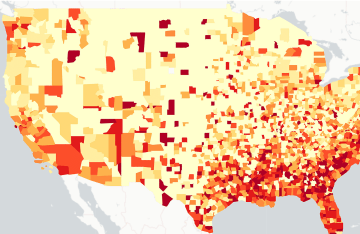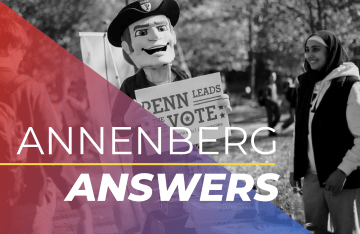Can Social Media Networks Reduce Political Polarization on Climate Change?
The researchers tested how different kinds of social media environments would affect political polarization and group accuracy.

Social media networks, which often foster partisan antagonism, may also offer a solution to reducing political polarization, according to new findings published in the Proceedings of the National Academy of Sciences from a team led by University of Pennsylvania sociologist Damon Centola.
The Penn researchers asked 2,400 Republicans and Democrats to interpret recent climate-change data on Arctic sea-ice levels. Initially, nearly 40 percent of Republicans incorrectly interpreted the data, saying that Arctic sea-ice levels were increasing; 26 percent of Democrats made the same mistake. However, after participants interacted in anonymous social media networks—sharing opinions about the data and its meaning for future levels of Arctic sea ice—88 percent of Republicans and 86 percent of Democrats correctly analyzed it, agreeing that sea-ice levels were dropping.
Republicans and Democrats who were not permitted to interact with each other in social media networks but instead had several additional minutes to reflect on the climate data before updating their responses remained highly polarized and offered significantly less accurate forecasts.

“New scientific information does not change people’s minds. They can always interpret it to match their beliefs,” says Centola, director of Penn’s Network Dynamics Group and author of the new book How Behavior Spreads. “But, if you allow people to interact with each other in egalitarian social networks, in which no individual is more powerful than another, we find remarkably strong effects of bipartisan social learning on eliminating polarization.”
To test this notion for politically charged topics like climate change, Centola, along with Penn doctoral student Douglas Guilbeault and recent Penn Ph.D. graduate Joshua Becker, constructed an experimental social media platform, which they used to test how different kinds of social media environments would affect political polarization and group accuracy.
Their study was motivated by NASA’s 2013 release of new data detailing historical trends in monthly levels of Arctic sea ice. “NASA found, to its dismay, that a lot of people were misinterpreting the graph to say that there would actually be more Arctic sea ice in the future rather than less,” Guilbeault explains. “Conservatives in particular were susceptible to this misinterpretation.”
The researchers wondered how social media networks might alter this outcome, so they randomly assigned participants to one of three experimental groups: a political-identity setup, which revealed the political affiliation of each person’s social media contacts; a political-symbols setup, in which people interacted anonymously through social networks but with party symbols of the donkey and the elephant displayed at the bottom of their screens; and a non-political setup, in which people interacted anonymously. Twenty Republicans and 20 Democrats made up each social network.
Once randomized, every individual then viewed the NASA graph and forecasted Arctic sea-ice levels for the year 2025. They first answered independently, and then viewed peers’ answers before revising their guesses twice more. The study outcomes surprised the researchers in several respects.
“We all expected polarization when Republicans and Democrats were isolated,” says Centola, who is also an associate professor in Penn’s Annenberg School for Communication and School of Engineering and Applied Sciences, “but we were amazed to see how dramatically bipartisan networks could improve participants’ judgments.” In the non-political setup, for example, polarization disappeared entirely, with more than 85 percent of participants agreeing on a future decrease in Arctic sea ice.
“But,” Centola adds, “the biggest surprise—and perhaps our biggest lesson—came from how fragile it all was. The improvements vanished completely with the mere suggestion of political party. All we did was put a picture of an elephant and a donkey at the bottom of a screen, and all the social learning effects disappeared. Participants’ inaccurate beliefs and high levels of polarization remained.”
That last finding reveals that even inconspicuous elements of a social media environment or of a media broadcast can hinder bipartisan communications. “Simple ways of framing a political conversation, like incorporating political iconography, can significantly increase the likelihood of polarization,” Guilbeault says.
Instead, Centola says, put people into situations that remove the political backdrop. “Most of us are biased in one way or another. It’s often unavoidable. But, if you eliminate the symbols that drive people into their political camps and let them talk to each other, people have a natural instinct to learn from one another. And that can go a long way toward lessening partisan conflict.”
Funding for the research came, in part, from the Social Sciences and Humanities Research Council of Canada, a Robert Wood Johnson Foundation Pioneer Grant, and the National Institutes of Health’s Tobacco Centers for Regulatory Control.



